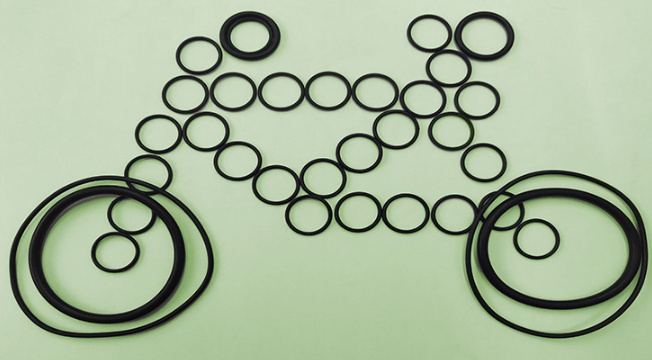KNT as china high temperature oil seal manufacturer, oil seals, also known as shaft seals, are used to seal rotating elements, such as shafts or rotating holes, from escaping lubricant, dust, and other contaminants. They are essential components in many industrial and automotive applications, maintaining mechanical integrity and preventing damage or wear.
Features of high performance Oil seal manufacturer oil seal
- Materials: Usually a combination of materials, including elastomers such as nitrile rubber or silicone, and metal springs or garter springs for reinforcement.
- Shape: Usually circular, with a cylindrical outer surface and a lip that contacts the shaft or hole.
- Sizes: Comes in a variety of sizes to accommodate different shaft diameters and depths.
- Configuration: Can be single lip or double lip, depending on application and desired level of protection.
The benefits of oil seals
- Protection: stable High pressure oil seal helps prevent lubricant leaks and protects against contamination, which can cause mechanical wear and damage.
- Longevity: Properly installed oil seals help extend the life of your machinery by preventing leaks and preventing contamination.
- Increased Efficiency: Machinery efficiency can be increased by ensuring lubricants stay in place and reduce friction.
Application of high performance Oil seal manufacturer oil seal
- Automotive: Used in automotive applications such as wheel bearings, drive shafts, and gearboxes to prevent leaks and prevent contamination.
- Industrial: Used in a variety of industrial applications including pumps, gearboxes, and motors to prevent leaks and prevent contamination.
- Agriculture: Used in agricultural equipment such as tractors and combines to prevent spills and prevent contamination.
In conclusion, KNT as a high performance Oil seal manufacturer, stable High-Pressure oil seals are versatile and essential components in many industrial and automotive applications.
They protect against leaks, contamination, and wear and help extend the life and efficiency of machines. When selecting an oil seal, it is important to select the proper size, material, and configuration for a specific application to ensure optimum performance and service life.
Product details page content

1. The surface roughness of the shaft is processed to the surface roughness RA0.2 ~ 0.63um, and RMAX = 0.8 ~ 2.5um.
2. The diameter tolerance of the shaft shall not exceed H11 according to the GB1801 regulations.
3. The width of the falling angle is required by GB13871-92.
4. Surface hardness: The material of the shaft is advisable to use carbon steel and alloy steel. The recommended hardness is HRC45 or more. When the medium is dirty, there is a pollution impurities or axis from the outside. It should be HRC50 to 60, and the depth of the quenching layer should be ≥0.3mm.
5. The axis downside angle is 30 degrees (maximum). There should be no burrs, sharp corners, and spiral processing marks on the backward angle. The roughness of the backward angle is RA ≦ 3.2um.

pay attention
(1) The surface of the shaft is rough and too high, and the oily lip mouth is easy to wear and leaky oil.
(2) The burrs, sharp corners, and spiral processing traces at the backward angle are easily scratched by scratching the oil seal and the lip mouth will cause the oil seal to fail.
(3) Avoid defects such as damage or reduction of shaft damage, sand eye, installation bias, and radial beating.



